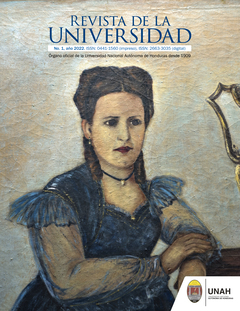Modernization and hygiene and sanitation policies in: San Pedro Sula in the first three decades of the 20th century
DOI:
https://doi.org/10.5377/ru.v1i1.15400Keywords:
Modernity, liberal reform, aqueduct, public market, prostitutionAbstract
The fundamental interest of this study is to analyze the ideal of modernity by the local elites of San Pedro Sula through three elements: the aqueduct, the local market, and the control of prostitution in the city. in this sense, the application of technical and scientific procedures, which are built and applied from the capital Tegucigalpa as an urban laboratory from 1876. The replication of these procedures in the rest of the cities of Honduras, in our case; San Pedro Sula between the first three decades of the 20th century, in a context of civil wars, the banana boom on the North Coast, the crisis of capitalism in the United States in 1929, and the arrival of Tiburcio Carias Andino in 1932, which marks the end of the struggle of the banana companies and the civil wars in Honduras.
353
Downloads
Published
How to Cite
Issue
Section
License
Copyright (c) 2022 Revista de la Universidad

This work is licensed under a Creative Commons Attribution-NonCommercial-ShareAlike 4.0 International License.




